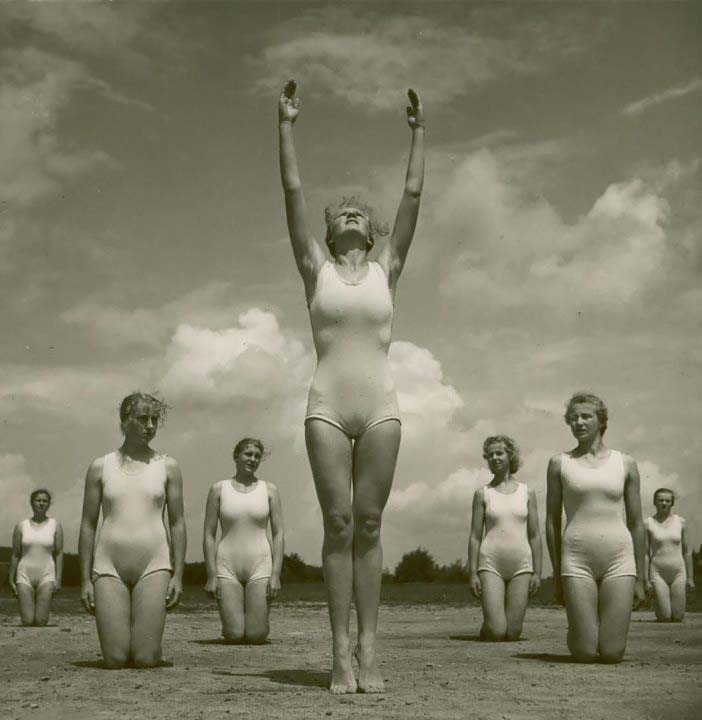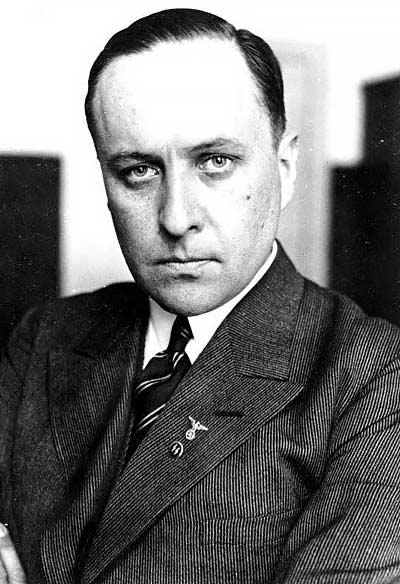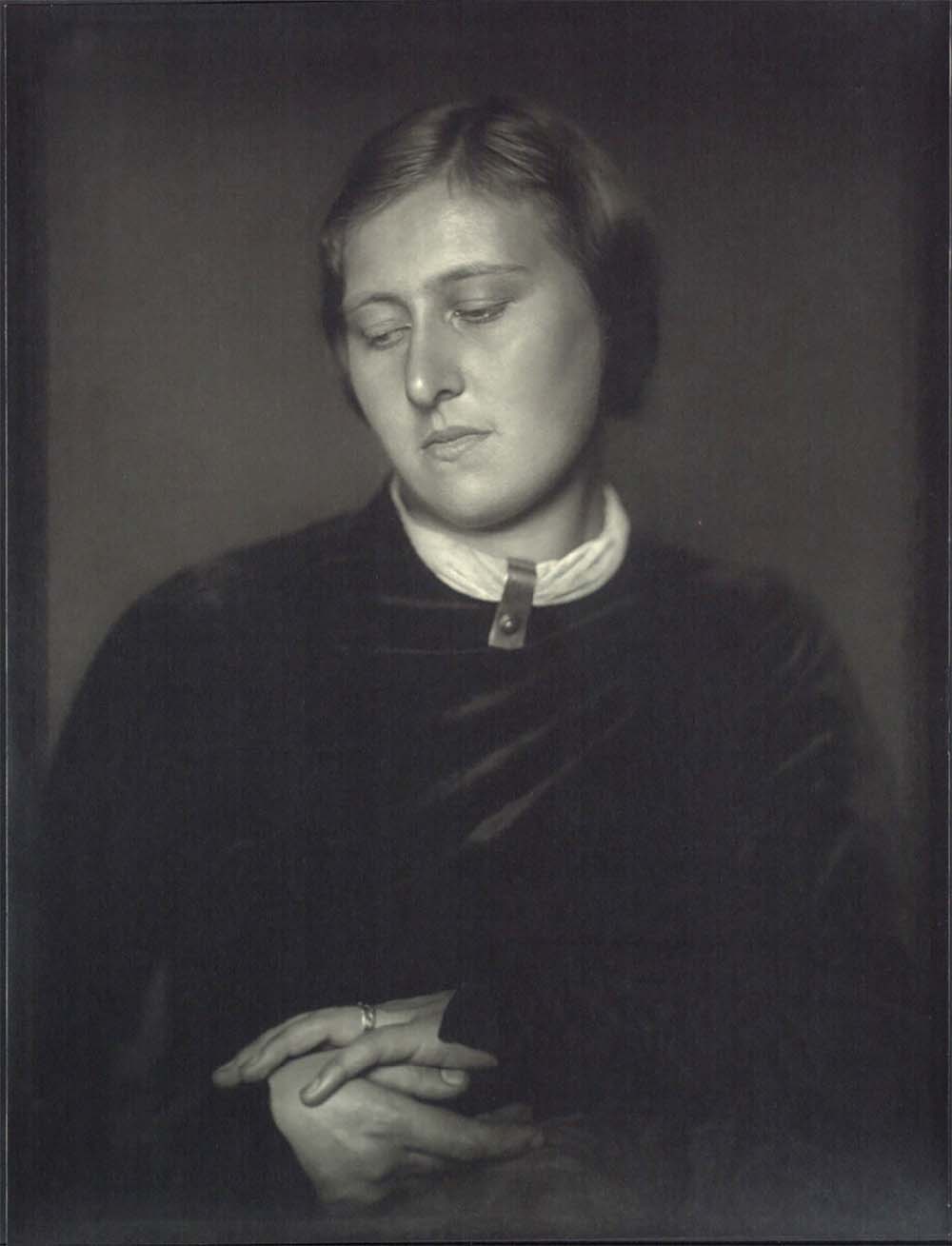It is not hard to admire the idealising designs of Rudolf Koppitz, born 3 January in 1884, but something sinister lurks in his less well known relationship with his wife Anna and the work they did together. What does this history reveal about our current obsession with the digital tools that help us perfect our pictures; are we photographers or painters?
His most famous is Movement Study in which a willowy, naked Russian ballerina
bends impossibly at full-stretch in front of a black background conformed to
her silhouette by the languid embrace of a trio that moves to a sapphic metre,
like that of Swinburne's poem of that name;
So the goddess fled from her place, with awful
Sound of feet and thunder of wings around her;
While behind a clamour of singing women
Severed the twilight.
...which though written 28 years before, might be a description of the
photograph and its 'sound of feet', a cinematic reiteration that reels forward its
motion. Koppitz, then a committed pictorialist reproduced it in this orientation,
and sometimes flipped to read left-to-right, in virtuoso gum bichromate,
bromoil and silver gelatin prints.
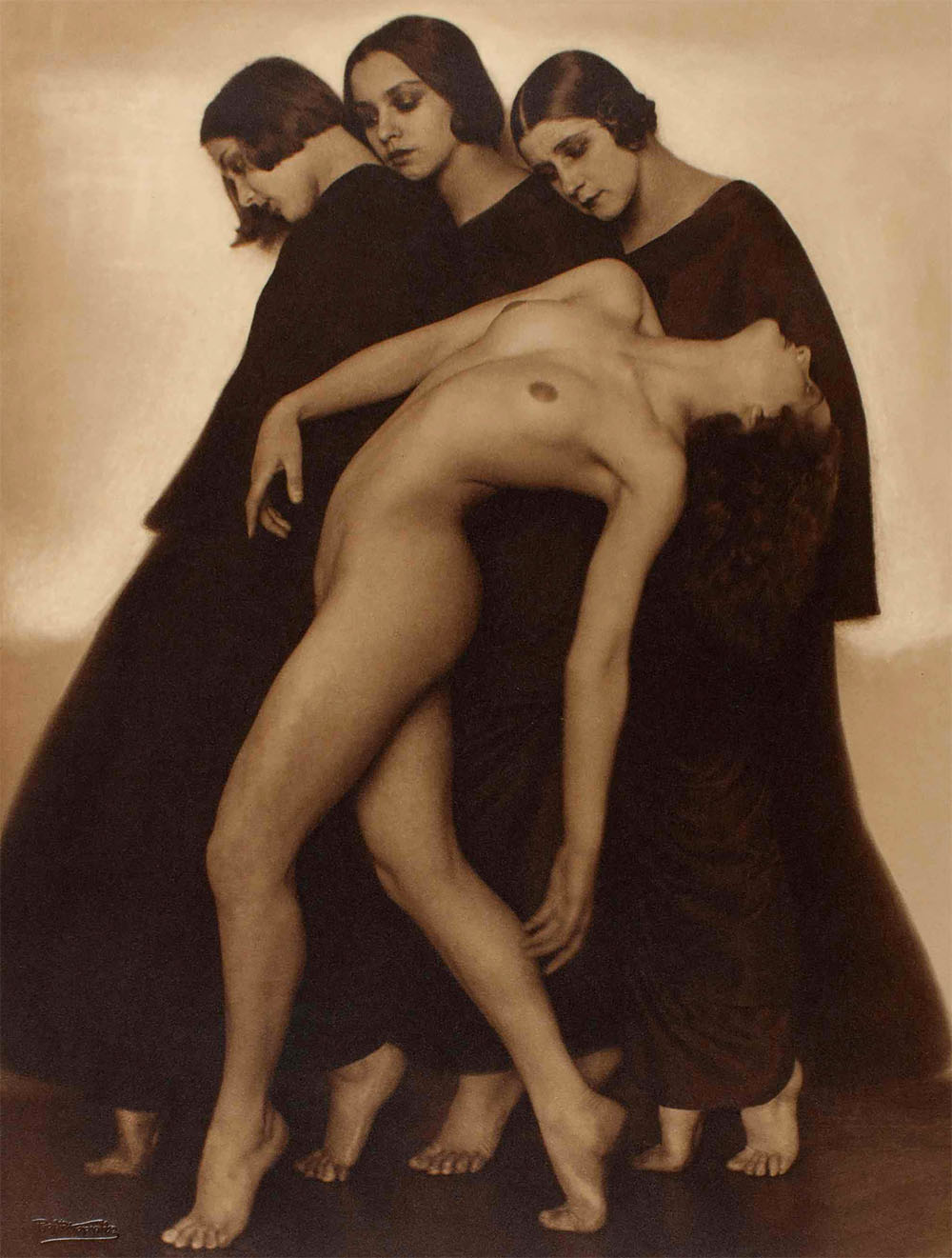
© Rudolf Koppitz (1924) Bewegungsstudie (Movement Study). Toned silver gelatin print.
It also carries forward the aesthetics of the Vienna Secession, the Austrian Art
Nouveau though, in its bold graphic forms, pyramidal composition and shallow
relief geometry, can be read the proto-Art Deco of the Wiener Werkst tte or of
Gustav Klimt. In fact the image is conservative if regarded in the context of
Neue Sachlichkeit anti-expressionist objectivity then predominant in
photography of Central Europe.
Koppitz was born in the hamlet Schreiberseifen in Poland, which after he had
been an aerial photographer for Austria during WW1, became part of the far
eastern part of the newly created Czechoslovakia. He moved to Vienna.
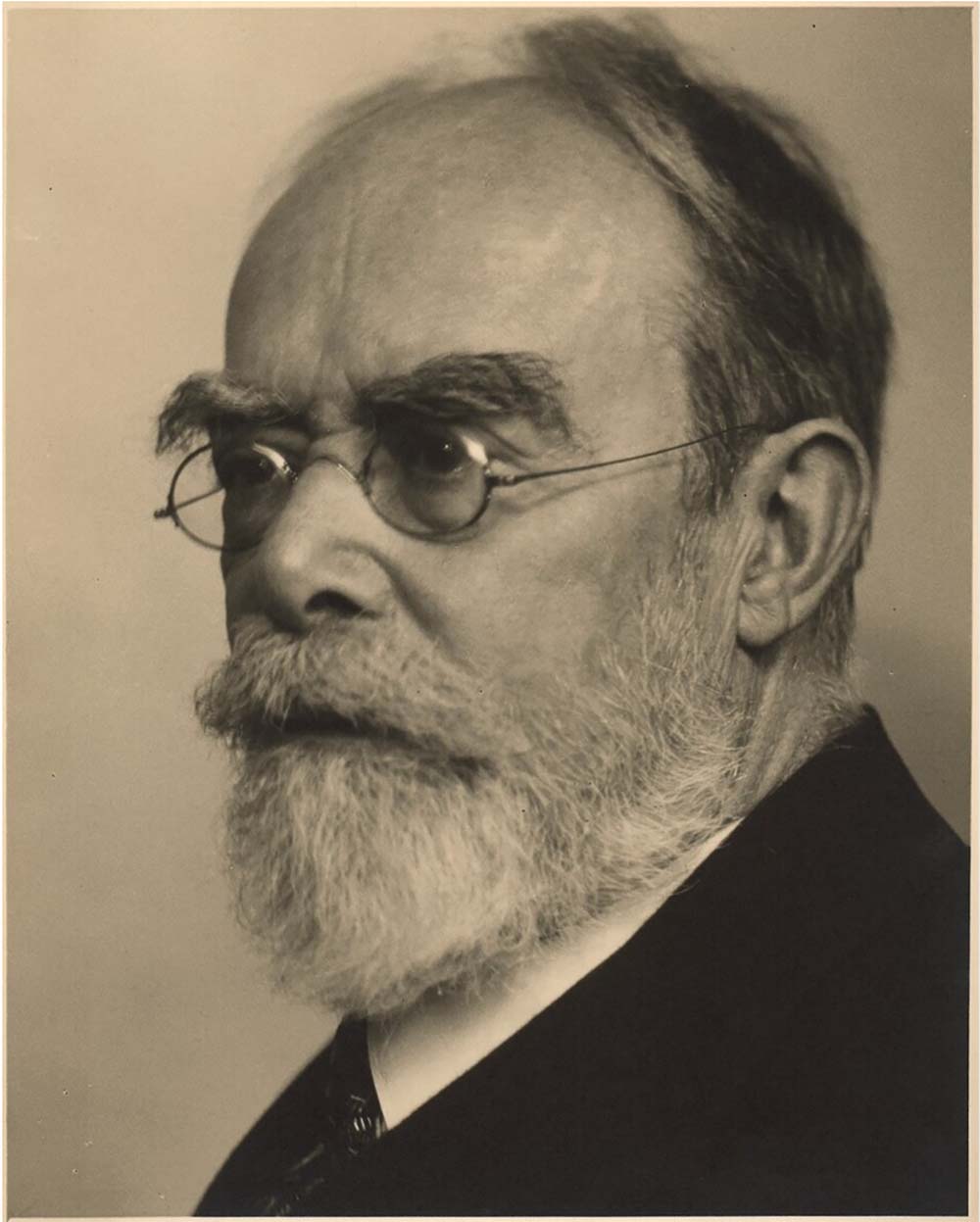
© Rudolf Koppitz (1918) Josef Maria Eder, silver gelatin print. Courtesy Albertina, Vienna, Austria
The retouching of Koppitz' prints was carried out by his wife Anna (1895 -
1989), also a photographer, whom he met when both had been assistants at the
Graphische Lehr und Versuchsanstalt in Vienna, founded by specialist in
photographic chemistry
Josef Maria Eder (1855-1944) whose portrait Koppitz
made, as
Nadar had done in 1887. Koppitz in 1919 became professor there for
20 years and in addition gave private courses in the small studio next to his
apartment. In 1923, a year before he made his famous
Bewegungsstudie, he
and Anna married and had one daughter, Lisalotte.
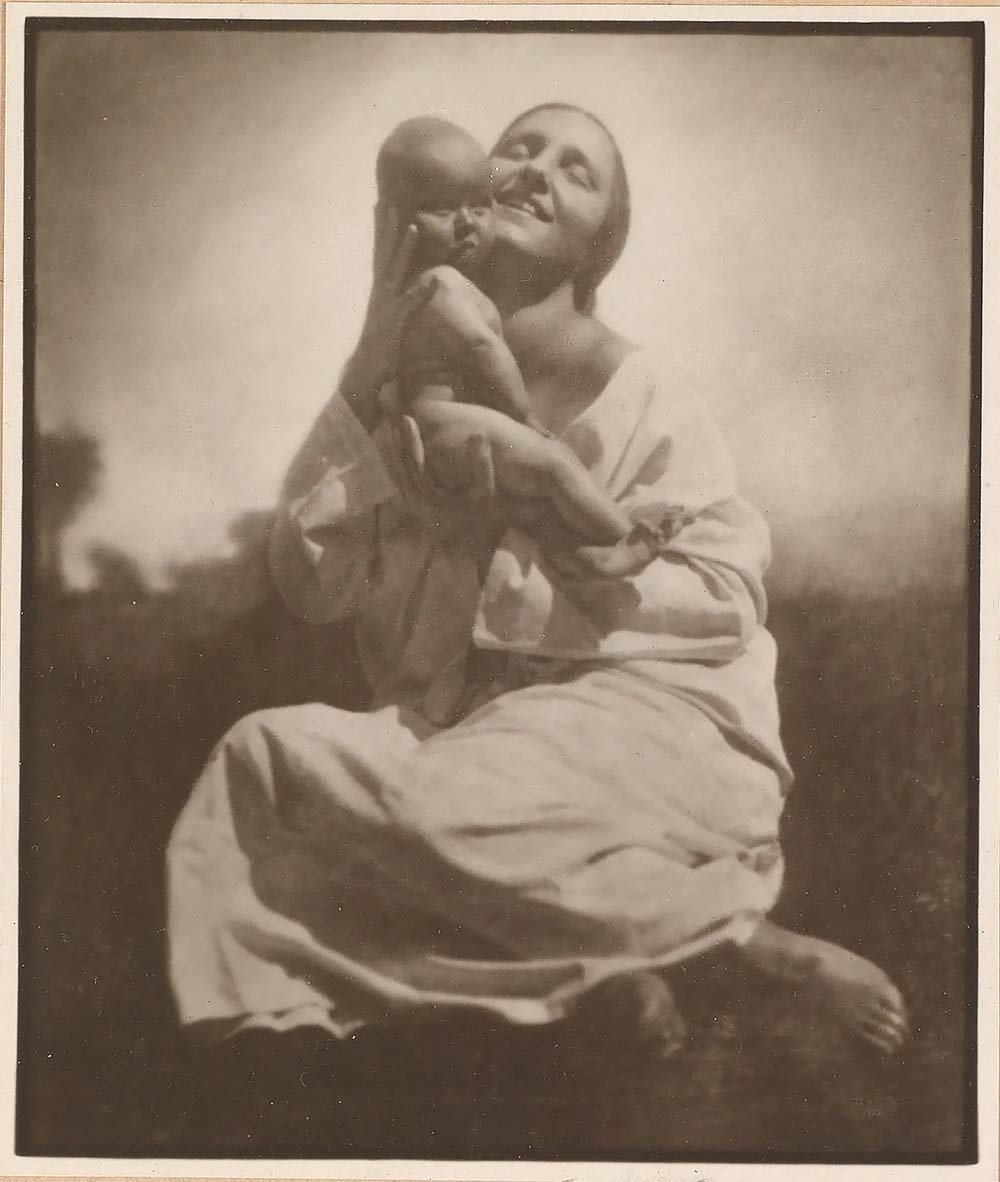
© Rudolf Koppitz (c.1925) Mutter und Kind
The ecstatic, idealising madonna and child is a classic of Kunstphotographie
(as Pictorialism was called in Austria) as
Julia Secklehner asserts. That
apotheosis is evidently the motivation for
Bewegungsstudie too, and in the
nature-worship of Koppitz' self-portrait nude
In the Arms of Nature, most likely
a collaborative effort by the couple, which Secklehner identifies as part of the
Köperkult ('cult of the body') and the naturist heimat sentiment in its alpine
setting which it shares with another low-angle
'self-portrait,' with his cameras,
and the heroic
Mountaineer of about 1930.
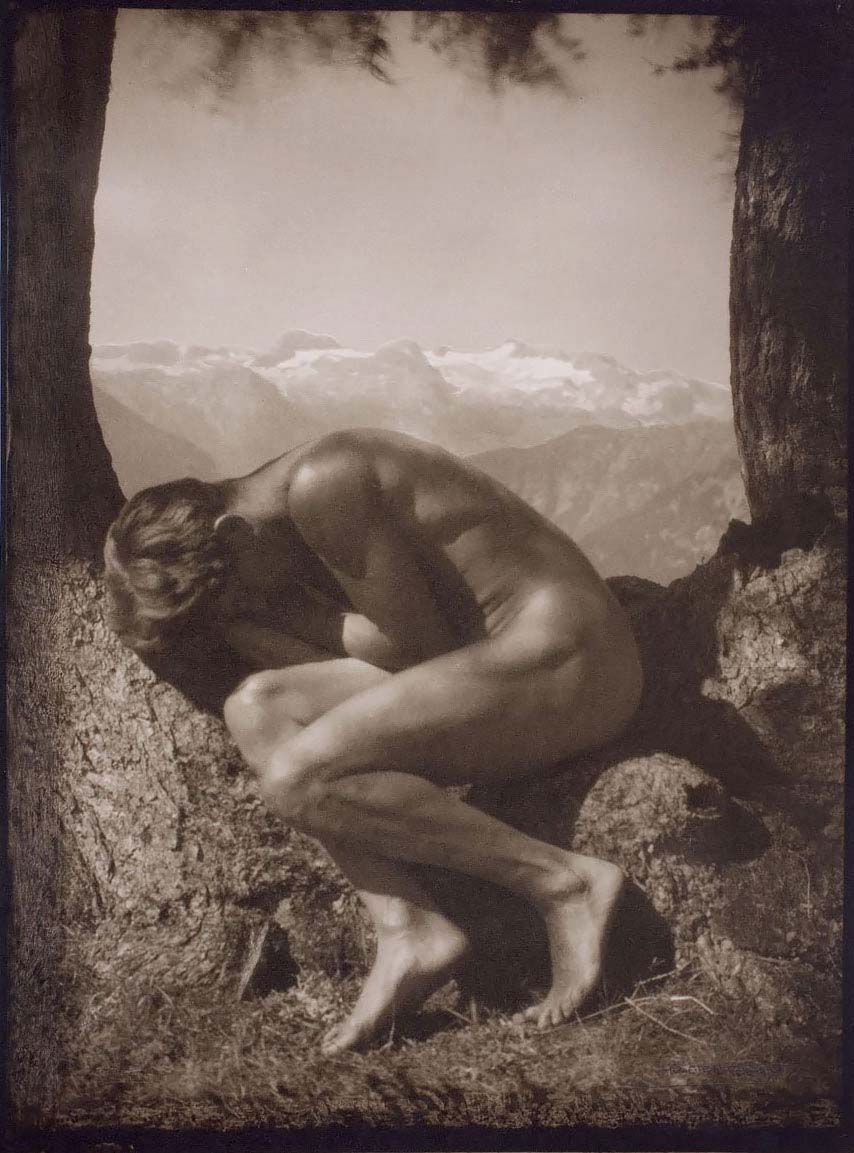
© Rudolf Koppitz (1923) In the Arms of Nature [self-portrait] 1923 Multicolour gum bichromate print Albertina, permanent loan of the H here Graphische Bundes-Lehr-und Versuchsanstalt, Vienna
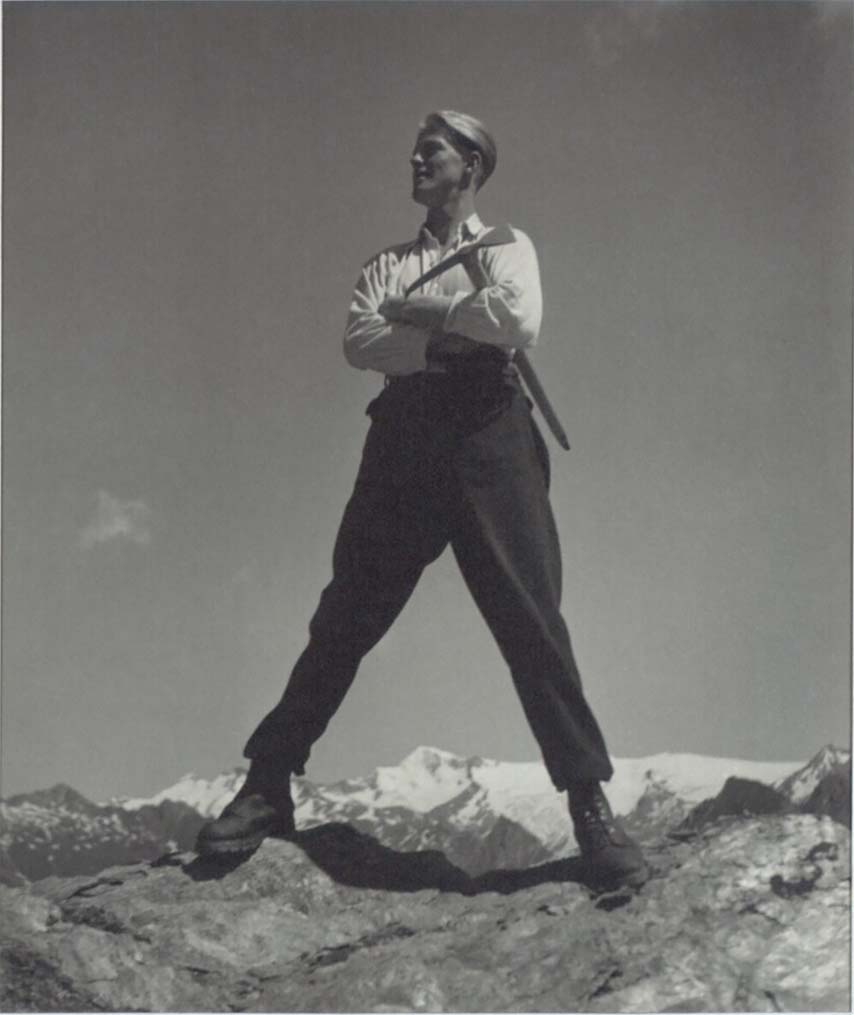
© Rudolf Koppitz (about 1930) Mountaineer. Bromoil, 30.2 x 25.8 cm, Albertina, Permanent loan from the Higher Graphic Federal Teaching and Experimental Institute
is amongst a large series of
Völkisch imagery to which the couple
devoted themselves in the 1930s; ethnographic records of the peasant
archetype, eulogised as the archaic essence of Germanic peoples, at first
mystical and quasi-theosophical, but progressively more chauvinist and
nationalistic under the Austrian chancellor dictatorship initiated by Engelbert
Dollfuss in 1933.
Rudolf died in 1936, when Adolf Hitler remilitarised western German lands near
the Rhine River and the eastern border of France, a provocation that defied the
terms of the Versailles Treaty, which had prohibited Germany from keeping
troops in that territory. His death may have saved his considerable reputation
as a highly regarded art photographer; whether he favoured Hitler has not been
discovered. However
völkisch ideologies, those embedded in his imagery, were
instrumental to Nazism.
Anna's sympathies however were compromised when she agreed, in writing
that has been preserved, to make Nazi propaganda. Nazi Minister of Agriculture
R. Walther Darré, believing Rudolf to be still alive, wrote to couple's studio to
commission him, since the symbolically charged peasant pictures had been
noticed by the Nazis. Anna replied, and so began the major commission of her
life.
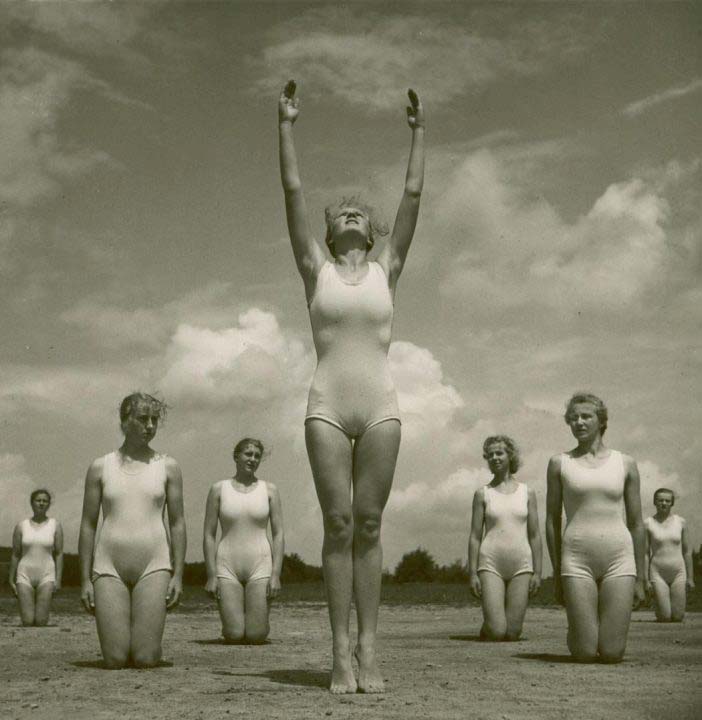
Anna Koppitz (1939) Gymnastics at the Reichsschule Burg Neuhaus. Silver gelatin, 702cm x 720cm.
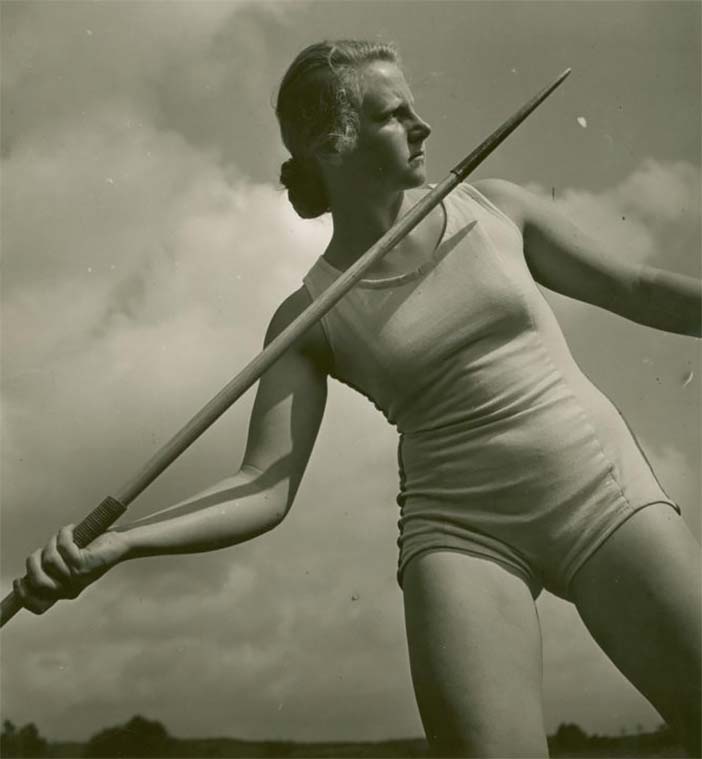
Anna Koppitz (1939) Spear throwing student at the Reichsschule BurgNeuhaus. Shown at the Reichsnährstandsausstellung in Leipzig-June 1939. Silver gelatin print 666 720 cm
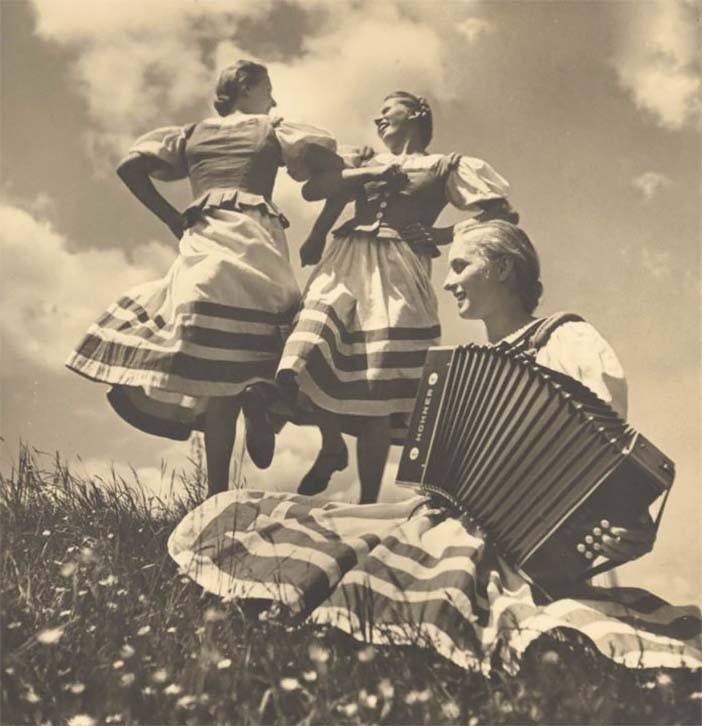
Anna Koppitz (1939) Traditional music and dancing at the Reichsschule BurgNeuhaus. Silver gelatin 696 720 cm
At the the Nazi farming school in Burg Neuhaus, the "Reich School of the
Reichsn hrstand for Physical Exercises" Darré promoted Nordic racial purity
through eugenics and the "New nobility of blood and soil."
She was to illustrate the experiment, and in 1939, alongside German sports
photographer
Hanns Spudich, she made heroic pictures of the young, "racially
pure" bodies of the young farmers from the Bauernschaft peasantry,
varnishing and homogenising their appearance, showing them sometimes in
iconic traditional costumes, but usually pure white leotards and dissociated
from agricultural labour, and made attractive and athletic according to Darr 's specifications.
Often using only the sky shot through a yellow or orange filter as a background,
she followed the successful Koppitz formula to show them performing peasant
dances, playing ball games, competing in archery, spear throwing, and in
coordinated exercises developed for Neuhaus by Nazi gymnastics ideologist
Rudolf Bode. The photos appeared in his gymnastics book, in displays and in
Odal, the organ of Nazi propaganda, thereby avoiding any inglorious
association with discredited 'art'.
At the end of 1939, Darré founded the "Working Group for the selection of
racial lites and procreation science" to breed a German super-race from
peasant stock. He asked Anna if she would be happy to undertake nude
photography of his subjects, not erotic, or 'artistic,' but to demonstrate
flawless 'racial' attributes.
Anna Koppitz would have accepted the brief, had Darré not fallen out of favour
with Himmler and been forced to resign "for health reasons", and in 1940, she
wrote: "I was happy to promise your minister to work on the blood issue.
Whether portrait or nude photography comes down to the same thing for me;
it
is only difficult to find the right people." As nothing in the archive supplied by
her daughter's husband showed Anna to be a subscribed member of the
National Socialists, the last sentence leaves one to wonder whether she found
Darr 's ideas dubious, but his offers of work simply too hard to refuse three
years after the death of her husband; they were certainly an opportunity to
profit from the aesthetic that she and Rudolf had developed well before the rise
of the Nazis.
Magdalena Vuković, editor of Serving racial politics : Anna Koppitz’s photographs for Reich Minister R. Walther Darr (publ. Photoinstitut Bonartes) however, has no such doubt; texts by Elke Fuchs, Gesine Gerhard
and Vuković reveal that Anna had willingly pursued political commissions after
the Anschluss, and confirm that hers was the propaganda that projected
utopian notions of a Nordic Race and German supremacy that justified their
destruction of 'inferior' peoples.
Even now, you will find neo-nazi and white suprematist sites that celebrate her
work as equal to that of
Leni Rheifenstahl, though there you will find no
original thought, merely a parroting, and outright plagiarism of Nazi
propaganda.
Anna Koppitz lived to the age of 94, and while she was alive her daughter
(1925-2011) was also a photographer. Liselotte's works, included with her
parents' in a show Photographs 1910-1960 at Galerie Johannes Faber, Vienna,
in September 2013, were those from the 1950s and 1960s, modernist, some
applied to commercial purpose, distant from politics and oblique in
representing the figure, but with the same idealising impulse.
The aesthetic effects of photography from the first had been praised, not for
perfection but for verisimilitude, as did Elizabeth Eastlake nearly twenty years
after its invention;
"If we look round a photographic exhibition we are met by results which are
indeed honourable to the perseverance, knowledge, and in some cases to the
taste of man...portraits of the most elaborate detail, and of every size not
excepting that of life itself...[landscapes in] large pictures with minute foregrounds, regular planes of distance, and perfectly clear skies. The small
attempts at architecture have swelled into monumental representations of a
magnitude, truth, and beauty which no art can surpass — animals, flowers,
pictures, engravings, all come within the grasp of the photographer; and last,
and finest, and most interesting of all, the sky with its shifting clouds, and the
sea with its heaving waves, are overtaken in their course by a power more rapid
than themselves."
Digital imaging has brought to photographers the capacity to 'improve' images
that rival even the famed high resolution of the daguerreotypists' plates.
Certainly the latter made every effort, through lighting, pose, props, and even
hand-colouring to flatter their human subjects, but even beyond the cosmetic
'enhancement' of celebrities, today we witness a shift by some 'art'
photographers toward a discomfiting perfectionism.
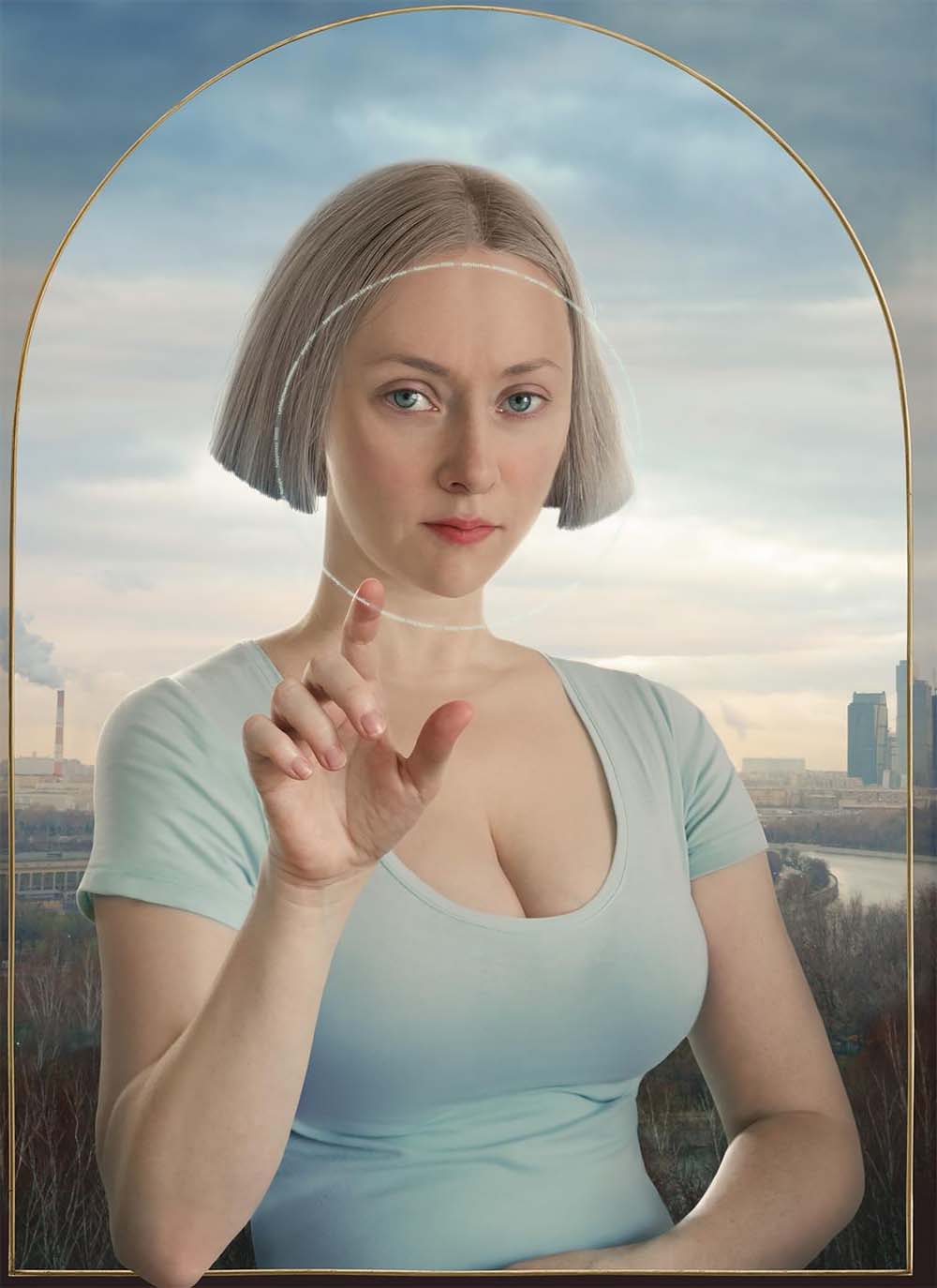
Katerina Belkina (2016) Personal Identity from the series Revival. Archival Pigment Print, 100 x 70 cm. Edition of 8 plus 2 artist's proofs.© Katerina Belkina
's chilly and immaculate imagery would be the envy of most
aspiring 'digital artists' and with its appearance in the most recent edition of Art
Market, is evidently desirable amongst collectors, but she emphasises that her
art is "digital painting based on photography;"
"First, I shoot, combine several frames into one in photoshop, and then
start the painting on the top in additional layers, as if I was painting with
real brushes and oil paint. But I paint it in the program. I work a lot to create
and add many details that are not existing in the original photos, so here,
my skills in drawing get the full meaning. This long drawing process usually
takes over one month for each artwork."
In titling her series
Revival, from which the image above is drawn, Belkina
proposes it as a "Neo-Renaissance," the antithesis to which she asserts is "pop
culture — the culture of the masses." Her fastidiously produced imagery
contains reference to the real world 'texture' of smoke stacks, polluted skies
and high-rise buildings. We understand and accept them as a transparent
fiction in an era in which
story
, for good or ill, has become all-pervasive.
However as we move beyond the realm of truth and reality into Mark
Zuckerberg's "Meta-reality" do we need to beware of "photo-suprematism"?
James McArdle
James McArdle
Artist and recovering academic enlightened by the metaphoric potential of focal
effects and the differences between human and camera vision.
